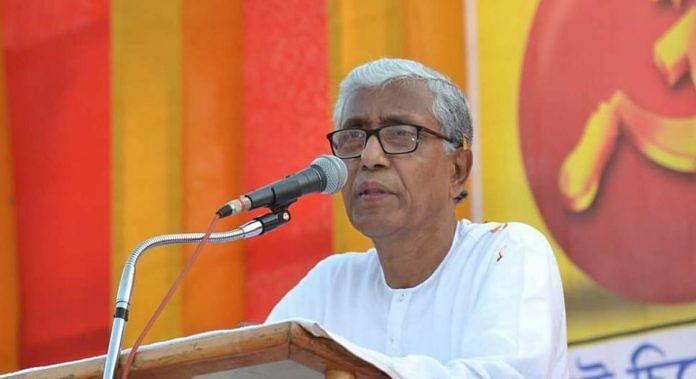National attention was focused on Tripura because the Left was engaged in a direct fight with the Right.
The Meghalaya, Nagaland and Tripura assembly election results will have a far-reaching impact on not only the regional, but also the national political landscape.
The BJP has now emerged as a pan-India party, while the Congress and the Left are receding. There could also be political realignment at the national level with the BJP attracting new allies.
With a population of 45.58 million, the Northeast accounts for 25 Lok Sabha and 498 assembly seats. The BJP has been eyeing the region to gain some Lok Sabha seats in the next election to compensate for the ones it might lose in Rajasthan, Madhya Pradesh and other states led by the party where it peaked in 2014. Of the 25 seats, the BJP and allies got 10 in 2014, while the Congress won eight.
The BJP and its allies, already leading 19 of India’s 29 states, have two more – Tripura and Nagaland. It has much to cheer because, from a voteshare of 1.5% in Tripura in 2013, the BJP has reached a position where it can install its own chief minister. It is also poised to form the government with its allies in Nagaland.
Going by its track record, the BJP might even try to lure MLAs in Meghalaya to form the government, as it did in Goa and Manipur.
The BJP’s performance in the Northeast will embolden it in Kerala, the other Left bastion where it has been making efforts to find a foothold, and West Bengal.
A lesson for Congress
As for the Congress, if it can form the government in Meghalaya, it will be a big achievement because though it has emerged as the single-largest party, it still needs a few more seats to attain majority. Having learnt a lesson or two from Goa and Manipur last year, when the Congress emerged as the largest party but still failed to form the government, the party leadership has despatched Kamal Nath, who is known to be good at making deals, to Meghalaya.
Once a stronghold of the party, the Congress has been steadily losing ground in the Northeast, where it ruled five of eight states in 2014. In Meghalaya, the Congress had left the campaign to chief minister Mukul Sangma. Party president Rahul Gandhi did not concentrate on the region, like he did in Gujarat or now in Karnataka. There’s a lesson in this for the Congress: It should focus on each and every seat if it means to come back to power, pitted as it is against BJP chief Amti Shah, who pays attention to the micromanagement of constituencies.
Left with one stronghold
The elections hit the Left parties the worst, losing them one of their two surviving bastions. The national attention was focused on Tripura because the Left was engaged in a direct fight with the Right there.
Manik Sarkar, ruling the state for over two decades, undoubtedly faced severe anti-incumbency, but the BJP’s majority is stunning. Now, the CPM is left with just Kerala. West Bengal chief minister Mamata Banerjee has almost finished the party in the state, and the Left is nowhere near its 2004 peak nationally when it won 59 seats in the Lok Sabha and became kingmaker in UPA-I.
There is a debate underway in the CPM on whether the party should go for a broad alliance of secular, democratic parties with the Congress or go it alone. The faction led by general secretary Sitaram Yechury is keen on an alliance with the Congress in 2019, but the idea is opposed by his predecessor Prakash Karat. The defeat in Tripura might result in a rethink at the party congress next month, and the CPM might go for an alliance with the Congress.
The million-dollar question
Finally, the idea of a unified opposition to take on the BJP is yet to take shape. The question is who will bell the cat. There are inherent contradictions in the opposition. The satraps might not join the coalition. There is more than one prime ministerial candidate, and senior leaders like Mamata Banerjee or Sharad Pawar do not accept Rahul Gandhi as the face of the opposition. Though only 31 per cent of the people voted for the BJP in 2014, the million-dollar question is whether the opposition will present a united fight in 2019.



